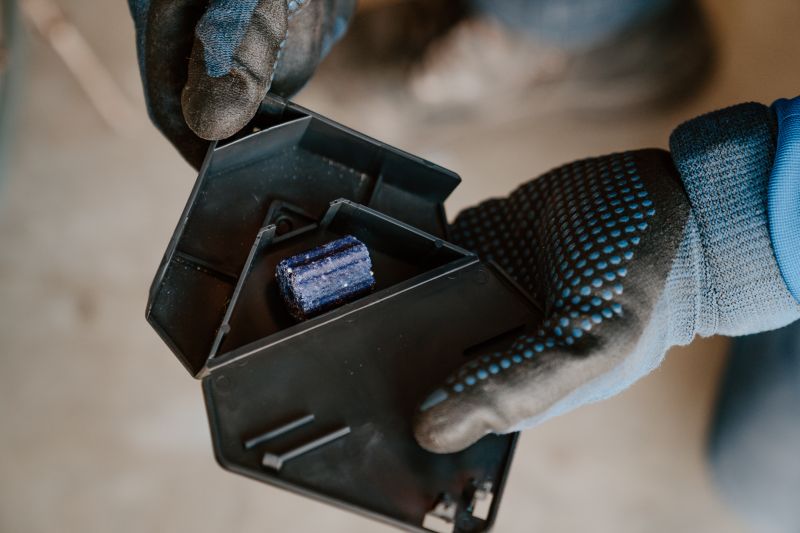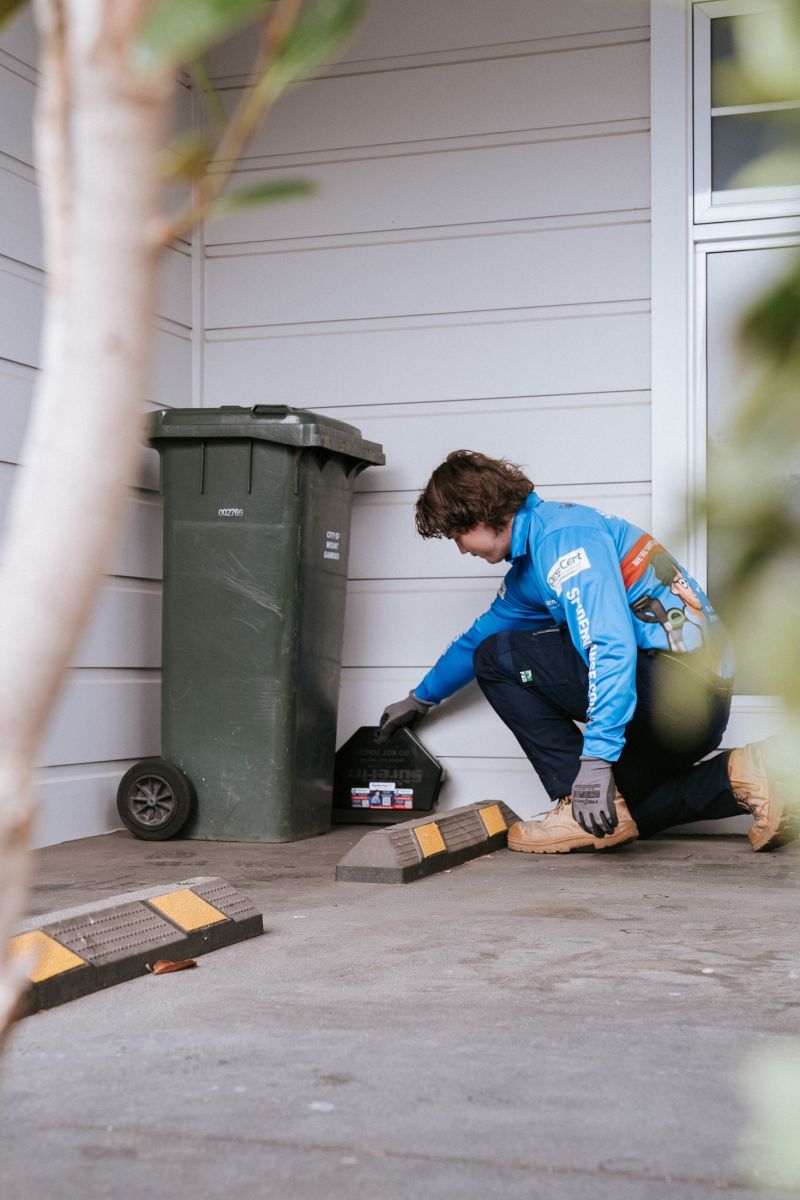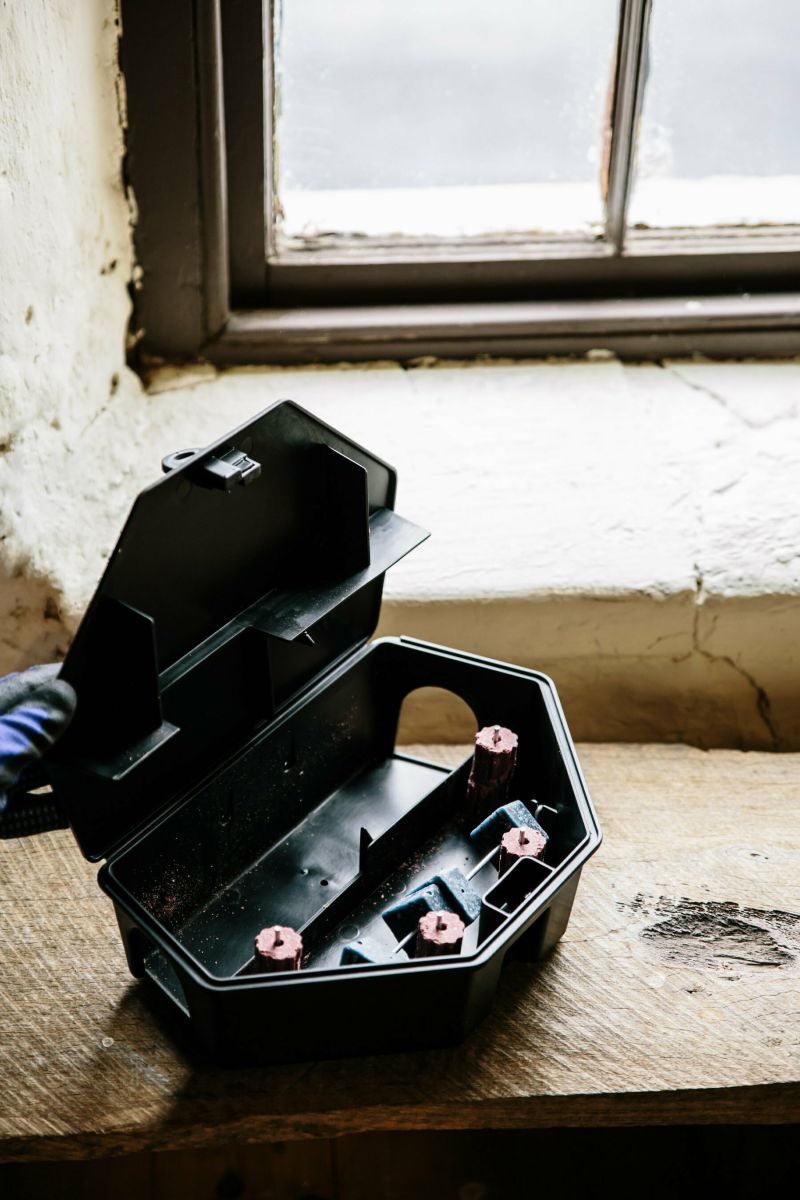
How We Control Rats and Mice
The first stage of any rodent control treatment is to carry out a thorough site inspection – it is important to identify the rodent species causing the problem, the level of infestation, how they are getting into the building and the location of any nests.
We use rodent baits in lockable bait stations (for safety). The inspection also provides the information to determine the number of bait stations required and where to place them.
In many cases, the rodent problem will be eliminated in one to two weeks, but we always plan a second visit around 4 weeks later to check and replace baits if required.
For effective and safe rodent control call the experts at Spiderman SE
Get rid of rats and mice safely

How Our Rat and Mice Treatments Work
Our professional rodent baits contain a highly effective rodenticide. They are called “single feed” rodenticides – the rats and mice only need to eat a very small amount to receive a lethal dose.
Once they have eaten the bait it may take 4-7 days for the rodent to die.
Whereas most rodent problems in residential areas can be controlled in 1-2 visits, in cases of a severe infestation or for businesses requiring ongoing protection, several visits or an ongoing rodent protection plan may be required.
SAFETY CONSIDERATIONS
As always, safety is our number one consideration.
It is important that the rodent baits are kept away from children and pets, which is why we think carefully about the placement of bait stations and we always use lockable bait stations to keep the bait clear of prying fingers and paws.
The baits we use are based on cereal and so are not attractive to cats, and dogs would need to eat several kilograms of bait for a lethal dose. If a pet does accidentally ingest a small amount of bait, vets can administer vitamin K1 as an antidote.
We will discuss our proposed plans with you before starting the rodent control treatment, If you still have safety concerns we can develop an alternative strategy including the use of traps. Whilst improving the safety margin, these programs tend to take longer to gain control.

HOW TO PREVENT A RODENT PROBLEM
Generally, rodents come into buildings looking for shelter and food.
Preventing rodents from entering the building and eliminating sources of food will make your home a lot less attractive to rodents.

Rats can squeeze through gaps as small as the end of your thumb and mice through gaps as small as the end of your little finger. So, when it comes to rodent-proofing your home, it can be done but it needs to be comprehensive.
- Install door sweeps on exterior doors and repair damaged screens
- Screen vents and openings to chimneys
- Seal cracks and holes on the outside of the property (including areas where utilities and pipes enter the building) using caulk, steel wool or a combination of both
- Replace loose mortar and weather stripping around the building foundation and windows
- Trim back branches that may provide a runway to access the roof
Remove sources of food and moisture
- Store food in airtight containers and dispose of rubbish regularly
- Make sure petfood and chicken food (grains) are not readily available and stored in airtight containers
- Eliminate all moisture sites, including leaking pipes and clogged drains that provide the perfect breeding site for pests
Eliminate potential nest sites around the perimeter of the home
- Store firewood at least 6 metres away from the building.
- Keep shrubbery trimmed and cut back from the building.

